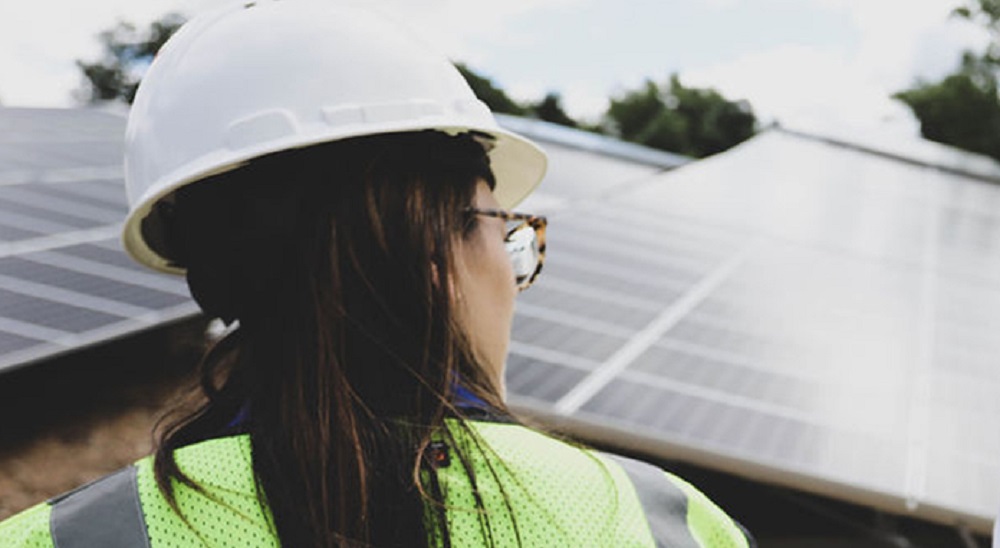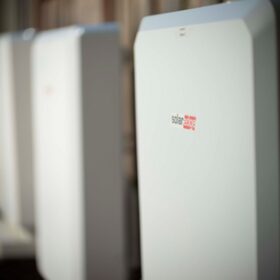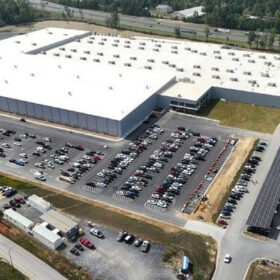In a surprise victory for the solar and clean technology industries, Senator Joe Manchin and Democrats reached an agreement on a reconciliation bill, dubbed the Inflation Reduction Act of 2022. The bill includes $370 billion in spending for renewable energy and climate measures.
One of the most impactful provisions in the bill, which can be read in full text here, is the long-term extension of the Investment Tax Credit, which has been instrumental in launching the solar industry we know today. The bill calls for a 10-year extension at 30% of the cost of the installed equipment, which will then step down to 26% in 2033 and 22% in 2034.
The tax credit applies to residential adopters of solar technology. If the bill is passed, the 30% credit will be retroactively applied to anyone who installed their system since the beginning of 2022.
The 30% credit also applies to energy storage whether it is co-located or installed as standalone energy storage. This enables the retrofit of a battery to a solar array while taking advantage of the credit.
One measure that was hoped for, but is not in the bill, was the “refundability” clause. Refundability means that if the tax credit value exceeds taxes owed on the year, it would be paid as a cash refund. This provision was not included, which hampers the value of the credit for some individuals. However, the credit can be rolled over to a following year.
There are several “adders” for the tax credit depending on the type of organization, domestic product use, and project location. ROTH Capital Partners said that the investment tax credit could reach as high as 50% for some projects with the right adders applied.
The credit also includes the “direct pay” provision. This would allow a developer with little or no tax liability to treat the amount of credit as an overpayment of tax which would result a cash payment refund in the amount of such overpayment being made to the developer.
“With long-term incentives for clean energy deployment and manufacturing, the solar and storage industry is ready to create hundreds of thousands of new jobs and get to work building out the next era of American energy leadership. This is a crucial window of opportunity that we cannot miss, and now Congress must seal the deal and pass this legislation,” said Abigail Ross Hopper, president of the Solar Energy Industries Association.
The bill is expected to head to the Senate floor for a vote as early as next week.
This has been edited to properly explain the mechanism of refundability.
This content is protected by copyright and may not be reused. If you want to cooperate with us and would like to reuse some of our content, please contact: editors@pv-magazine.com.









If this makes it through the house and gets signed into law by the President, this will keep the ball rolling on residential and commercial solar panels systems as well as adoption of energy storage upgrades. 1.3 million California homes used this federal tax credit to provide lower costs to rooftop solar and cutting it back, as was planned for 2023 and 2024 was going to hurt the industry and the homeowners who have not yet been able to afford solar because of the pandemic economic problems.
True. And you gotta love house Newsome, Brown and other State officials take credit for improvements paid for by the Federal Government. They do it with a straight face, and get credit for the green initiative.
Gary..Califonia waved the property tax on new solar panels, solar roofs batteries and other solar required improvements on homes. They also now require all new home be built with grid tied solar and the sales price to property tax reflect the solar discount on the tax bill. They are also pushing the California utilities to accept all the new solar and integrate it into their Caldonia grid and that, in some states, is the really big hold up. In 2004 38% of the energy used for generating electricity was from fossil fuels, in 2022 it is only 8.5% Natural gas and now renewables have replaced the fossil fuels. Changing regulations rather than direct monetary payment is what the Governors and legislatures did to push along solar.
@Edward F Dijeau, Natural Gas is a fossil fuel.
Natural gas is a fossil fuel and is being replaced by PG&E, over time, and has already been reduced for making electricity by 66%, but is also being used in homes for heating, hot water and cooking and is one of the things being addressed as well but will take much more than just a mandate to do since Pacific Gas and Electric has the word GAS in its name. Elimination of Natural Gas plus all electric cars will require a lot of build out of renewables and they are best started at home with rooftop solar and batteries installed at 200% of the current home’s usage.
Without the tax liability rollover, this only benefits the rich. Hopefully that gets fixed considering how much emphasis there is for low and middle incomes in this bill.
I was thinking he same thing. Below though it states there is a “refundability” clause which might mitigate that as long as “developer” is classified as “private consumer”.
Yes, indeed. I’m seeing different things about how long you can carry forward the credit. At the very least some official clarity would be appreciated.
Yeah, this may end up screwing me over really, really badly. I just installed a $50,000 solar array about four months ago, with the understanding that I would get back 26% as a Federal tax credit; which would be $13,000. My Federal tax for the year runs in the low $5,000 range, so it will take three years to get the full tax credit. If they make this new law applicable to solar installed in 2022 and do not include the ability to carry the remainder forward, they are screwing me over AFTER THE FACT to the tune of around $8,000.
One can ask their employer to reduce their federal withholding to reflect the expected tax credit.
Take a bit of math and planning but could be done.
It’s not just lower income families getting hit – nonprofit organizations get NO credit towards going solar.
Jeremy Bartram it said it would be retroactive for 2022 so anyone getting installed this year will be able to claim 30%
Martin C, you miss understand tax liability tax liability is not what you have left to pay at the end of the year if your employers didn’t take enough it’s what your total liability is to the federal government. So if your employer takes enough tax throughout the year and you don’t owe at the end when you file taxes then you can now receive a refund because of your solar tax credit up to the amount your liability is with the government that the federal government will now count as overpayment because you went solar.
Retired people, who often own paid-off homes, also have little tax liability. A refundable credit would really help there.
I have clients who earn less than $75,000 a year who pay more than $5,000 in income tax and $10,000 in self-employment tax; they could recoup an entire $15,000 energy credit in one year. Would you call these people rich?
Federal tax or not. There are many states that with the little to no buy back on net metering still makes it financially none feasible. Customers should get full credit for all over production on their self generated power that Can carry from month to month.
For me and others with either battery storage or EV’s or both, the net metering is no longer needed to pay off the PV system. The savings in gasoline and diesel alone are more than enough. With multiple drivers, we charge all our vehicles from solar. For an average 12,000 mile driver with a 30 mpg car, this amounts to 400 gallons of fuel saved, or about $2,000 per year!
I’m just curious who is supposed to pay to maintain the infrastructure, for the fuel generating power at night and the wages of the employees that allow net metering customers to use their utility as a free infinite MWh storage solution through the year?
Anthony, it will be all ratepayers as they figure out the NET cost to the utility. If they are adding commercial solar 3 times faster than rooftop solar, like in California, then the profits from selling their low-cost solar power for retail will balance out the rooftop solar they must buy at retail. Eventually, Rooftop solar will either need to add batteries or have to pay for using the grid as a battery. That should not happen until Rooftop solar is more than 10% of the mix and right now it is less than 3%.
Without net metering you’ll need to add batteries to your system to make sense, of course that will increase ROI
For us, even with the tax credits, the ROI was beyond the battery life. (And also ignoring the noise and overhead). Perhaps, in 5 or 10 years, it will work out for the good.
Your definition of refundability is mistaken. This is from the energy.gov website:
This is a nonrefundable tax credit, which means you will not get a tax refund for the amount of the tax credit that exceeds your tax liability. Homeowners may get a tax refund at the end of the year due to the tax credit, if the reduction in tax liability means there was overpayment during the year. This can often occur when employers deduct taxes for employees over the course of the year. However, such refund is still limited by the taxpayer’s total tax liability. However, you can carry over any unused amount of tax credit to the next tax year.
Hello, thank you for this correction. The article has been updated.
Thinking about adding solar and I think I could get this to pay out in one year by converting offsetting IRA fund’s to a Roth IRA.
This is GREAT news! I’m in the process of getting more panels added, and I wanted to add some storage and a heat pump. This bill has tax credits for all of it.
Yes, it does, but you may not be able to do it all the same year if your tax liability is less than the 30%. I spread my installation over 10 years so each year I could claim enough tax credit to get the full refund and use that as “Seed Money” for the next years solar project. One year I put in panels, the next I installed batteries and so on. I am up to 16,000 watts of solar and 56 kilo watt hours of batteries so far and have gotten every dollar of available tax credits. low-income residential solar adopters can do it with a plan that is slow and steady as long as the tax credits lasts.
I used this tax credit last year, would I be able to add battery storage and use this newish tax credit for the new install?
Retired w/ small tax base .Is there any way to install a solar system and get the discount on the system for people over 80 years old.
Below though it states there is a “refundability” clause which might mitigate that as long as “developer” is classified as “private consumer”. Where do you see this stated?
I’m curious on the definition of “developer” does this include retirees, non-profits, disability tax payers?
I have not yet finalized my solar install, but I am already under contract. The purchase has not yet been made. In the engineering phase. I rushed to get the 26%. I wonder if they will make it retroactive for 2022 as well. That 4% is a substantial amount for someone in the middle class. I’m not “green” by a long shot, but I really supportive of affordable renewable. Either way, this is a big win for a solar future!
Ask your contractor for a 5% pre-2023 installation credit or discount to offset the 26% credit you will have to take if you install this year. You would end up paying about the same, but the contractor could count on a job this year since a lot of people will be thinking the same thing and want to hold off. A bird in the hand….
Yes it will be retroactive if it passes.
It says it will be retroactive for those who install in 2022.
Ryan – Love to hear your thoughts on proposed Bill Section 13102(d), which appears to reduce the ITC for commercial solar PV from 30% to 6% only through 2025.
Hi Art, we are digging into this now. My checks tell me that there are adders that boost the credit significantly beyond that 6% figure, and that in effect, if a prevailing wage is paid, that the rate is 30%. Working on clarifying the specifics.
Thanks – Commercial/industrial solar industry killer at 6%…
I installed 12 panels 10 years ago and claimed the fedreal tax credit on the system. Can I add 12 panels and microinverters and get the 30 percent tax credit on them? I believe in the past the tax credit was a one time credit.
You can keep adding as long and it is NEW equipment, solar panels or batteries and not replacement equipment, solar panels or batteries. Every new tax year is a new credit opportunity for solar panels but not for other energy upgrades made to the primary home. The only drawback is a new electrical permit and utility connection fee required at every improvement and the utility could also take away your old NEM rates and replace them with a less desirable NEM rate for the new equipment. If that is the case, you can always install the new equipment off-grid and not tie it to the utility at all. Off-grid systems will also get the tax credits as long as it powers your primary home.
It looks like those of who installed solar in 2022 will get the 30% ITC benefit instead of the 26% ITC. Here is the text in the bill from the democrats.senate.gov site.
(a) EXTENSION OF CREDIT.—
(1) IN GENERAL.—Section 25D(h) is amended by striking ‘‘December 31, 2023’’ and inserting ‘‘December 31, 2034’’.
(2) APPLICATION OF PHASEOUT.—Section 25D(g) is amended—
(A) in paragraph (2), by striking ‘‘before January 1, 2023, 26 percent, and’’ and inserting ‘‘before January 1, 2022, 26 percent,’’, and
(B) by striking paragraph (3) and by inserting after paragraph (2) the following new paragraphs:
‘‘(3) in the case of property placed in service after December 31, 2021, and before January 1, 2033, 30 percent,
‘‘(4) in the case of property placed in service after December 31, 2032, and before January 1, 2034, 26 percent, and
‘‘(5) in the case of property placed in service after December 31, 2033, and before January 1, 2035, 22 percent.’’.
For those who installed this year, it appears the 30% will apply from 12/31/21 through 1/1/2033. See page 344 of the bill: https://www.democrats.senate.gov/imo/media/doc/inflation_reduction_act_of_2022.pdf
This is HUGE and GREAT NEWS!!! Solar tax credits and incentives are vital for solar panel adoption. We need to continue pushing to promote and develop solar installs for residential and commercial, and especially power-hungry industries. And alongside these solar incentives should be electric vehicle incentives. EVs are a huge stop towards reducing climate change and preventing global warming. We hope this passes and continues to push the solar movement forward!
Can anyone see how this impacts commercial systems already in progress? Residential seems a lot more clear.
I was considering putting solar on a rental in California. Due to property tax rules I understand when I die heirs would be paying property tax on the solar as only the first owner has a property tax benefit. And if the estate tax exemption is lowered to 1 million as was the threatend case about 12-15 years ago, estate taxes would also be owed on the solar. It seems it should be refundable. Coming up with that much money to install but needing to wait years for the tax benefit is a real hardship on those who can least afford solar.
The rule on rental property, unlike owner occupied property, that is left to close relatives, is that owner occupied gets to leave the property and the existing tax assessment to heirs that move into the property but loose the lower rates if heirs rent the property out. If the property is a rental, then there is no advantage, and the heirs are assessed in full including any improvements including the solar. If you or the heirs uninstall the solar before assessment and re-install after they move into the property, then they also could get the exemption plus the 30% tax credit on the labor of the re-install and there is no added assessment on the solar. Since you get no advantage to install solar on a rental since the renters are paying the electric bill, I would not recommend it, but adding more solar and a battery system to your own home, that you leave to move-in heirs, would benefit all.
The article specifically states residential solar. Is there a provision for commercial as well?
Like others, I’m also interested in non-residential use. Anyone seen a good and detailed about the bill? One example, that I was asked if an american using his US income exported panels to Mexico to install on his future home, would he still get the credit?
This will do a lot for solar and other energy upgrades. The only problem I see is the $14000 cap on credits, after you get solar there won’t be much credits left for anything else. ( heat pumps, cars, etc.)
is the $14000 cap for one year only, or the length of the program? Thanks
The Solar portion of my Tesla Solar Glass Roof got a $5,600.00 Tax credit at 26%. The Automobile tax credit will be $7,000.00 if they ever make the batteries here in the USA . That would leave $1,400.00 for the heat pump. All of these items are money saving or money-making items and you want the government to shell out more? OK, some states also have credits or incentive that save money. We are lucky to get anything.
What I read said the $14000 cap is life of program. Yes, it’s much better than nothing. I just think we need to electrify everything and could use a little more help.
This is a new program and does not count previous installations and tax credits. Before, you could add ne solar panels and batteries every year with no cap. Now, with the lifetime cap, you can do the same thing until you reach the cap. Since I have already used the old tax credits for solar and batteries, the new $14,000.00 will be for everything else once they start manufacturing them in the USA.
Hey guys so there is a 14k lifetime tax credit cap on solar panels and batteries?
If there is no lifetime cap. Can you get solar panels one year and get the 30% federal tax credit and then the next year add batteries and get another 30% federal tax credit?
I’m sorry guys, I must have misunderstood to cap amount. According to Kiplingers that will apply to one part of it~not the whole program. Check out https://www.kiplinger.com/taxes/605069/inflation-reduction-act-tax-credits-energy-efficient-home-improvements
In addition, the $500 lifetime limit will be replaced by a $1,200 annual limit on the credit amount (the lifetime limit on windows will go away, too). So, if you spread out your qualifying home projects, you can claim the maximum credit each year. The annual limits for specific types of qualifying improvements will also be modified – and for the better. Beginning in 2023, they will be:
$150 for home energy audits.
$250 for an exterior door ($500 total for all exterior doors);
$600 for exterior windows and skylights; central air conditioners; electric panels and certain related equipment; natural gas, propane, or oil water heaters; natural gas, propane, or oil furnaces or hot water boilers; and
$2,000 for electric or natural gas heat pump water heaters, electric or natural gas heat pumps, and biomass stoves and boilers (for this one category, the $1,200 annual limit may be exceeded).
For eligible home improvements after 2024, no credit will be allowed unless the manufacturer of any purchased item creates a product identification number for the item, and the person claiming the credit includes the number on his or her tax return.
Qualifying homeowners can get rebates as high as:
$840 for a stove, cooktop, range, oven, or heat pump clothes dryer.
$1,750 for a heat pump water heater; and
$8,000 for a heat pump for space heating or cooling.
Rebates for non-appliance upgrades will also be available up to the following amounts:
$1,600 for insulation, air sealing, and ventilation.
$2,500 for electric wiring; and
$4,000 for an electric load service center upgrade.
There will be limits on the amount certain families can get, though. For instance, a rebate can’t exceed 50% of the cost of a qualified electrification project if the family’s annual income is between 80% and 150% of the area median income. Each qualifying family will also be limited to no more than $14,000 in total rebates under the program.
Solar Panels and qualified electrical storage, IE Battery systems, will only be limited to the owed taxes in the same year as the installation, but like the old system of Tax Credit rebates, can be carried over into subsequent years following the installations to offset future taxes owed on family homes on personal Federal income tax Returns. Income limitations of the size and amount of the tax credits will apply based on a family’s income to put more credits into lower income pockets.
Sorry, I am still confused about the refund. Part of the of sales pitch from the Solar Company/Finance was that I would get a check back for 26% of the costs (minus whatever I owe in taxes – usually around $300 – $500), and then apply that as a principal payment to bring my monthly payments down considerably. Installed on March 2022. Will that happen now or not? If not, that seems like a big deal.
The non-refundable Federal tax credit is a discount on the taxes you owe. The only check you will get is any portion of your owed taxes that is covered by the Federal Solar tax rebate. IE Let’s say your Taxes for the year are $6,500.00 and you had $6,800.00 withheld, so your normal refund would be $300.00. Now you install an 8,000-watt solar panel system for $24,000.00. 26% of that would be $6,240.00 of an eligible tax credit and on the new law you would get 30% which $7,200.00. Since you only owed $6,500.00 in taxes and paid $6,800.00 in withholding, the maximum refund would be what you paid in or $6,800.00 for that tax year. However, the carryover part of the law, would allow you to claim the remainder, if any, the following year. In this case at 26%, you would get back $6,240 + 300 = $6,540.00 for the year and no carry over, but at 30% tax credit you would get $6,800.00 this year and an additional ($ 7,200.00 – $6,500.00) = $700.00 in tax credits the following year because $6,500.00 + $700.00 = $7,200.00 that is your allowable credit on a $24,000.00 system at 30%. If your total Federal tax bill is only $500.00 in taxes, The you could claim the $500.00 the first year, $500.00 the second year $500,00 the third year and so on until the total credit comes to the total allowed or the program runs out in 2034. Some State programs or utility programs will pay you a check but not the Federal Tax Credit For solar. You need to owe taxes to claim the credit. You cannot claim interest or loan origination fees as part of the credit, but utility hook up charges and city permits are also allowed and usually paid as part of the contract price from the solar installer.
I appreciate you taking the time to reply, and I understand that I should (and will) reach out to the solar company/ tax professional. But if I am understanding the basics here, instead of getting a check back for 26% – what I owe….I now get a “credit” to apply to my future taxes. I get how that equals out in math, but it creates an unexpected wrinkle in the financial plans, because now instead of having a lump sum of somewhere in the neighborhood of $6000 to make that big principal payment, I know how to eek that out each year, what like 12 years?? I must be misunderstanding this, because that seems like not such a great deal for people who normally don’t owe thousands of dollars in taxes each year….I’ll comment back after I confirm with Solar/Finance/Tax people.
Under the 2022 Inflation Reduce Act, I read that there are Grants that would help cover the costs of solar for those that are considered residential low income families. My wife and I are retired in California, with very little Federal Income Taxes. Where can I go for more information to see if we qualify for these Solar Grants?
We have some solar panels installed 7 years ago with 20 years lease in a NY city home.
I have the only one option to buy the system this year with a certain price. If we buy it this year then will it be considered as installed this year as far as IRS is concerned?
I own a rental house that used to be my primary residence. Can I claim the 30% solar tax credit on my taxes, or is the tax credit limited to owner occupied properties only?
On the primary residence you live in or registered to vote with. Next time the tenant moves out, move into and live in it a year, take your mail, sign up for utilities and Reguster to vote. You must live in it the entire tax year you claim it as your residence and up to the time you file for your tax credit with the refund going to your bank or residential home address at that same location. The only thing is, you cannot get any of the use for your upgrades if you move out, after the work is done, and tenants won’t take care of it but only get the use and benefit.